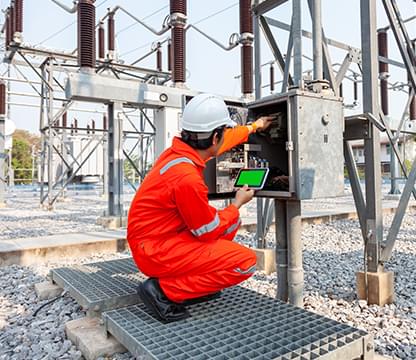Expert solutions for mechanical engineering industry support to meet your requirements.
Expert solutions for mechanical engineering industry support to meet your requirements.
Blog Article
Top Tips for Effective Electric System Troubleshooting
Troubleshooting electrical systems needs a systematic strategy, based in a detailed understanding of electrical concepts and safety methods. The subtleties of reliable repairing expand beyond mere technical understanding; recognizing how to document searchings for and prioritize security can substantially influence outcomes.
Understand the Essentials
Understanding the fundamentals of electrical systems is essential for reliable troubleshooting, as a solid foundation permits professionals to detect and resolve problems more efficiently. A detailed understanding of electrical concepts, such as voltage, existing, resistance, and power, is critical in recognizing the source of issues. Voltage is the electrical prospective difference that drives existing through a circuit, while resistance opposes the circulation of present, affecting the overall functionality of the system.
Knowledge with circuit elements, including resistors, capacitors, diodes, and changes, is also extremely important. Each element plays a distinct role in circuit behavior and can impact performance when malfunctioning. Furthermore, understanding collection and parallel circuit setups is vital, as these plans influence the distribution of voltage and existing within the system.
Furthermore, expertise of security protocols is indispensable. Service technicians need to know prospective threats, such as shock and short circuits, to execute safe troubleshooting practices. By grasping these foundational principles, specialists enhance their ability to carry out efficient diagnostics and repairs, ultimately leading to improved performance and dependability of electric systems. This fundamental knowledge is the cornerstone of effective fixing undertakings.
Gather Necessary Equipment
Effective troubleshooting of electric systems calls for the best set of tools to diagnose and resolve problems precisely. A fully equipped professional can significantly improve efficiency and performance in recognizing issues. Necessary devices consist of a multimeter, which determines voltage, current, and resistance, permitting precise evaluations of electrical parts. Clamp meters are also valuable for gauging present without detaching the circuit, guaranteeing safety and security and ease.
In addition, protected hand devices such as screwdrivers, pliers, and cord strippers are essential for securely controling electric connections. It is also recommended to have a circuit tester available to validate the existence of voltage in electrical outlets and cables. For even more complicated systems, a thermal imaging camera can assist detect overheating elements, indicating prospective failings.

Adhere To an Organized Approach
Having gathered the appropriate devices, the following action in troubleshooting electrical systems is to follow a systematic approach. A methodical technique ensures that technicians can determine faults efficiently and properly, decreasing downtime and avoiding unnecessary repairs.
Begin by evaluating the system's schematic diagrams and requirements. This includes checking each element systematically, starting from the power resource and functioning towards the lots.
Use testing devices, such as multimeters and oscilloscopes, to gather objective information about voltage, existing, and resistance at different points within the system. This empirical proof will certainly assist your troubleshooting efforts and aid to verify or remove prospective root causes of failing.
In addition, think about ecological elements that might influence the system's efficiency, such as temperature variations or wetness access. A thorough evaluation of circuitry, connections, and parts will make certain that all possibilities are made up.
Record Your Findings
Thorough documents is important in the fixing procedure of electrical systems. This method not just help in recognizing the origin cause of the problem but additionally offers as a reference for future fixing efforts.

Additionally, keeping a log of components Go Here changed or fixings performed is invaluable. This info supports stock monitoring and can assist evaluate the longevity and integrity of details components.
Eventually, the paperwork procedure must be detailed yet concise, enabling easy retrieval and evaluation - electrical system troubleshooting. By prioritizing in-depth paperwork, service technicians can produce a useful understanding base that not only help in existing troubleshooting yet likewise empowers future maintenance efforts, therefore enhancing overall system dependability

Prioritize Safety Procedures
Recognizing the integral risks connected with electrical systems is important for guaranteeing safety and security throughout troubleshooting. Electrical shock, burns, and devices damages are just a few of the prospective hazards that service technicians encounter. Prioritizing precaution is not only a lawful commitment but likewise an ethical essential that safeguards both the service technician and the surrounding setting.
Prior to beginning any troubleshooting task, technicians must wear appropriate individual protective devices (PPE), including protected handwear covers, safety glasses, and flame-resistant clothing. Guaranteeing that the workspace is completely dry and devoid of mess can considerably minimize the threat of crashes. Furthermore, it is necessary to de-energize circuits before beginning any type of job, confirming that they are More Info not endure the usage of More about the author a multimeter or voltage tester.
Establishing clear communication protocols with staff member is additionally essential; this ensures that everyone understands potential hazards and the standing of the electric system being functioned on. Last but not least, having an emergency reaction strategy in area can confirm important in case of an incident. By prioritizing precaution, professionals can properly minimize dangers and foster a safer office.
Final Thought
Reliable electrical system fixing counts on a comprehensive understanding of essential concepts and a methodical strategy. Prioritizing security actions makes sure the health of individuals included and the integrity of the electrical system.
Report this page